Receive Email Updates
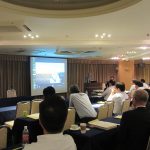 World Chlorine Council members JSIA (Japan Soda Industry Association) recently held a very successful meting on Technology, Safety and Environmental Issues in Kyoto, Japan.
World Chlorine Council members JSIA (Japan Soda Industry Association) recently held a very successful meting on Technology, Safety and Environmental Issues in Kyoto, Japan.
Over two days on 11 and 12 July 21019, 100 people gathered to discuss best practices in the safe production of chlorine and caustic soda (chlor-alkali) as well as to reward those chlor-alkali plants who were demonstrating the best peformance in this key area. Other essential discussions were on training and the sharing of near-miss experiences so that all attendees could learn how to avoid potential accidents in future.
Of particular interest were presentations on the ‘Jack Rabbit II’ initiative in the USA, which is aiming to better understand how chlorine behaves in the event of its accidental release.
JSIA members include chlor-alkali producers in Japan, all of whom readily attended this event. This was in addition to JSIA welcoming participants from their associate membership as well as expert external speakers.
This annual technical meeting occurred ahead of the World Chlorine Council General Assembly which will take place in Tokyo, Japan in October 2019. Here, more safety experiences will be shared between the global chlor-alkali community.
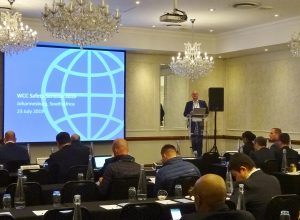 From 23-25 July 2019, the World Chlorine Council (WCC) held a successful Safety and Water event in Johannesburg, South Africa. With over 60 participants from across Africa, India, Europe and Asia, the three-day workshop brought together producers, distributors and users of chlorine.
From 23-25 July 2019, the World Chlorine Council (WCC) held a successful Safety and Water event in Johannesburg, South Africa. With over 60 participants from across Africa, India, Europe and Asia, the three-day workshop brought together producers, distributors and users of chlorine.
During the first day, the focus was on chlorine safety with diverse discussions on a range of topics. These included chlorine incident avoidance and risk assessment and the vital role that training plays in the safe handling of chlorine.
This was followed by a fascinating site visit to the Rietvlei Water Treatment plant, where participants learned how chlorine can be safely applied to disinfect drinking water to protect people around the world from water-borne illness. Of interest to attendees were the challenges faced in supplying both high quality and sufficient quantities of water.
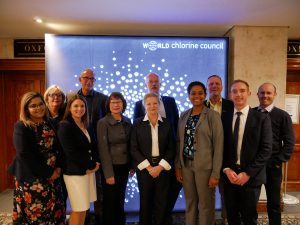 This led seamlessly to the final day, the African Water Forum. Here, a team of international experts instructed the audience on water related topics. These included how chlorine is essential in improving the health of 1.8 billion people world-wide who still drink contaminated water and the role of chlorine in achieving the United Nation Sustainable Development Goals (UN SDGs). They also gave presentations on supplying clean water at household, community and city scales, which were well received.
This led seamlessly to the final day, the African Water Forum. Here, a team of international experts instructed the audience on water related topics. These included how chlorine is essential in improving the health of 1.8 billion people world-wide who still drink contaminated water and the role of chlorine in achieving the United Nation Sustainable Development Goals (UN SDGs). They also gave presentations on supplying clean water at household, community and city scales, which were well received.
The African Water Forum was chaired by Deidre Penfold of the Chemical and Allied Industry Association (CAIA) who noted “The experts have provided us with a lot of excellent information. As part of our Responsible Care work, it is encouraging to see how people at all levels are contributing to the UN SDGs. The expert advice from this event will help to further develop South Africa’s input to these important goals”.
Many thanks were also given to Sasol and NCP Chlorchem, who hosted the meeting.
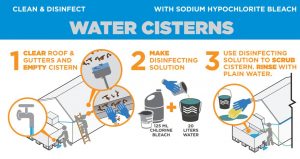 In collaboration with Andrew Robertson at the Water Engineers for the Americas, the World Chlorine Council has recently released a new, informative leaflet on how to disinfect cisterns using chlorine chemistry.
In collaboration with Andrew Robertson at the Water Engineers for the Americas, the World Chlorine Council has recently released a new, informative leaflet on how to disinfect cisterns using chlorine chemistry.
In many parts of the world, individual homes store collected drinking water in large tanks or cisterns. In order to keep these tanks clean and the household protected from water-borne illnesses, these tanks need to be regularly cleaned and disinfected. This helps to get rid of any potentially harmful bacteria or viruses that are growing within. Here, chlorine chemistry is vital due to the excellent and proven disinfectant properties of hypochlorite in addition to its affordability and applicability across a wide range of cistern sizes.
The new leaflet explains how to safely and effectively disinfect cisterns via simple diagrams. It is hoped that this leaflet can be used to safeguard the health of people in smaller communities across the globe.
Euro Chlor, the European chlor-alkali association, has just completed its 17 Successes programme and released their latest video. This initiative highlights the vital role that chlorine and caustic soda play in keeping Europe’s workforce safe and making their jobs successful.
Over 6500 people are directly employed in making chlorine and caustic soda (chlor-alkali) in Europe. From these chemical professionals come products that we rely on every day to make our lives easier, safer or healthier. Many jobs also need chlor-alkali chemistry and would be very different, less efficient or more dangerous without it.
Take a look at www.17successes.com where you can see all of the 17 Successes that have now been published! Taking ’17’ as inspiration (from chlorine’s position on the chemical Periodic Table of elements), this programme presents 17 real Europeans, whose success at work is all thanks to chlor-alkali chemistry. Postcards are available for download from each individual success on the website and both postcards and rollups from Euro Chlor Communications Manager Catherine Birkner at cab [at] cefic.be.
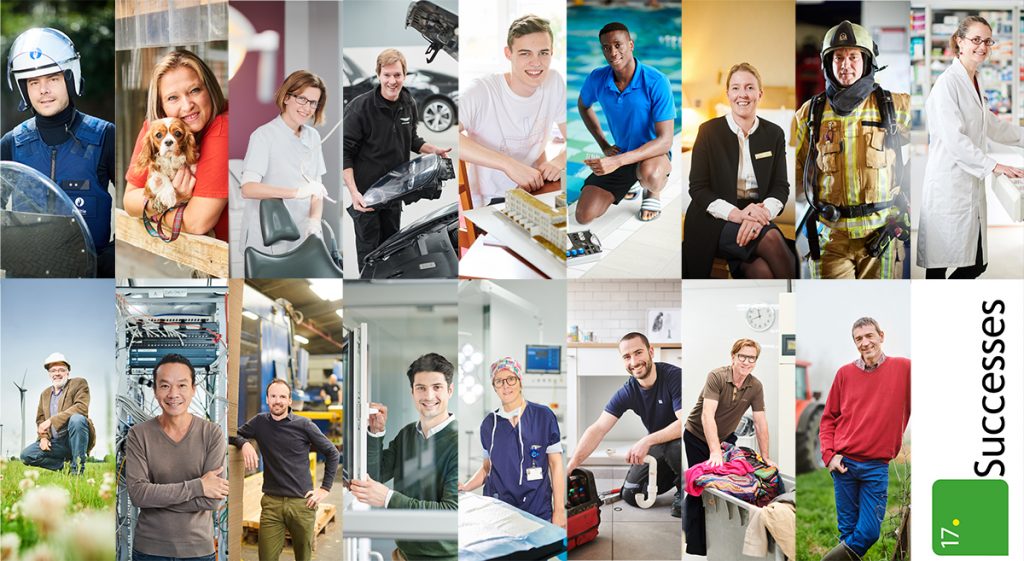
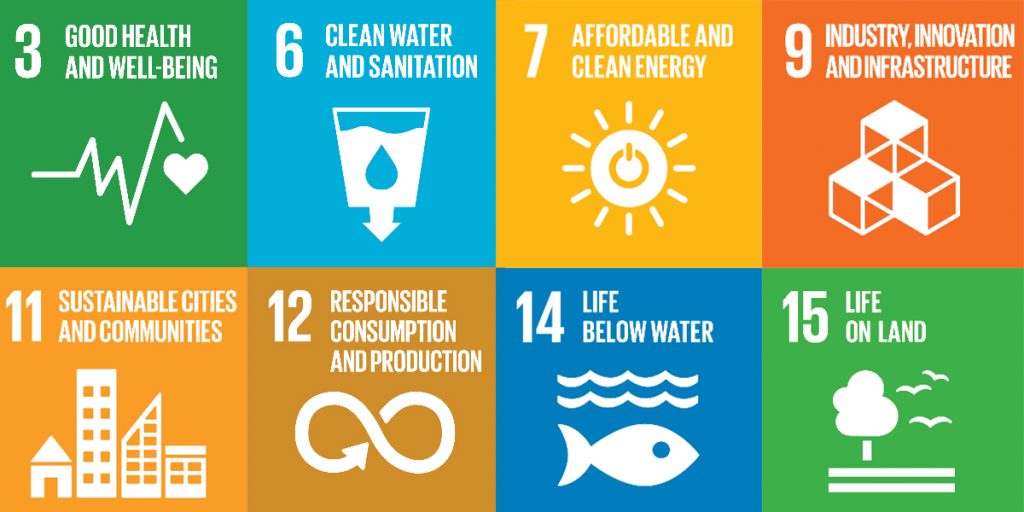 Chlor-alkali chemistry is essential to help achieve many of the United Nation’s Sustainable Development Goals (SDGs). The 17 SDGs are at the heart of global efforts to build a better world for people and our planet by 2030. Adopted by all United Nations Member States in 2015, the SDGs are a call for action by all countries to promote prosperity whilst protecting the environment. As such, the World Chlorine Council (WCC), has prepared a new website that lists the contributions that chlor-alkali can make.
Chlor-alkali chemistry is essential to help achieve many of the United Nation’s Sustainable Development Goals (SDGs). The 17 SDGs are at the heart of global efforts to build a better world for people and our planet by 2030. Adopted by all United Nations Member States in 2015, the SDGs are a call for action by all countries to promote prosperity whilst protecting the environment. As such, the World Chlorine Council (WCC), has prepared a new website that lists the contributions that chlor-alkali can make.
The WCC brings people together from around the globe to discuss, partner, and further global progress toward sustainability and achieve the SDGs, among many other topics.
You can find out more about which SDGs in particular are supported by chlorine chemistry on the WCC website at https://worldchlorine.org/sustainability/ or in this summary brochure.
Euro Chlor, the European chlor-alkali association, has recently unveiled its new website. The new online portal has been designed to promote the benefits of chlor-alkali and its products and the many jobs that rely on them whilst spreading information on best practices in safety, health and environmental protection.
Euro Chlor’s 34 producer members operate 65 manufacturing locations in 19 European countries, representing 97% of all European production capacity.
Euro Chlor represents the interests of chlor-alkali producers in Europe and is an active member of the World Chlorine Council.
Euro Chlor’s managing director, Dr Marleen Pauwels, noted that “We are proud of our brand new online presence which, alongside our social media channels, will help us to better support a safe, sustainable and successful chlor-alkali industry for Europe”.
The site is available at www.eurochlor.org.
The American Chemistry Council’s Chlorine Chemistry Division has released an excellent new video, focusing on the key role that chlorine chemistry plays in protecting drinking water.
It shows how chlorine gets rid of bacteria, viruses, and parasites from water to keep us healthy. It also keeps drinking water safe as it makes the journey from the water treatment facility to our glass.
This video is part of a wider series that shows other benefits of chlorine chemistry and how it truly is the ‘Element of Surprise’.
More on this can be found via the website – https://www.elementofsurprise.org
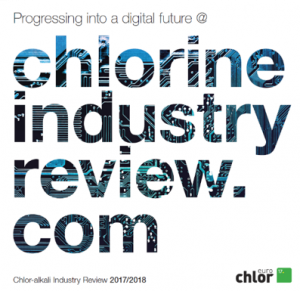 The first ever digital version of Euro Chlor’s Industry Review has recently been launched at https://chlorineindustryreview.com. This 2017/2018 version covers the most important European industry information from the past year divided up into five sections – Sustainability, Safety, Regulatory, Manufacturing & applications, and About Euro Chlor.
The first ever digital version of Euro Chlor’s Industry Review has recently been launched at https://chlorineindustryreview.com. This 2017/2018 version covers the most important European industry information from the past year divided up into five sections – Sustainability, Safety, Regulatory, Manufacturing & applications, and About Euro Chlor.
The updated Industry Review contains noteworthy stories, interactive figures, and the latest data and statistics. On the homepage there is an introduction video and speech from Euro Chlor’s Executive Director Dolf van Wijk and Management Committee Chair Dieter Schnepel. Also find investment, production, and capacity highlights, and how Euro Chlor members have helped to ensure the safe use of chemicals.
Euro Chlor is in the process of moving from print to a digital format for the Euro Chlor Industry Review, and would appreciate you spending a few minutes to evaluate the new online version. Click here to complete the online survey or contact eurochlor@cefic.be to give your feedback.
A summarized version of the review is also available in print and downloadable PDF format at the bottom of the homepage.
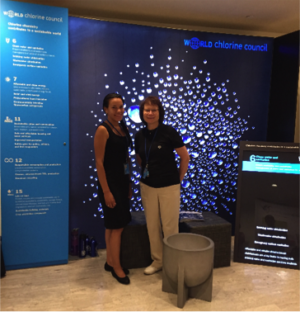
WCC Exhibit at 2018 UN High Level Political on Sustainable Development
The World Chlorine Council is honored to exhibit at the 2018 United Nations (UN) High Level Political Forum on Sustainable Development (HLPF) with partners from Water Engineers for the Americas and Haiti-Philanthropy. This year the HLPF is focused on six Sustainable Development Goals (SDGs): SDG 6, Clean Water and Sanitation; SDG 7, Affordable and Clean Energy; SDG 11, Sustainable Cities and Communities; SDG 12, Responsible Consumption and Production; SDG 15, Life on Land; and, SDG 17, Partnerships for the Goals. All of these SDGs are touched by chlorine chemistry and organizations such as the WCC.
For SDG 6, chlorine plays an especially critical role in making water safe to drink, disinfecting wastewater, and as a component of water infrastructure through PVC pipes. SDG 7 is supported by chlorine chemistry as a building block chemistry in the manufacture of key ingredients in solar panels, wind turbines, and hybrid car batteries. Chlorine chemistry helps achieve SDG 11 in its role to better transportation networks, provide affordable housing materials, and manufacture telecommunications and computer technology. Using chlorine chemistry to manufacture titanium and titanium dioxide results in less waste, conserves resources, and contributes to a circular economy, exemplifying SDG 12. Lastly, SDG 15 is aided by chlorine chemistry in the manufacturing of crop protection compounds that improve agricultural yields, reduce soil erosion, and help prevent habitat loss.
Chlorine chemistry is essential to help achieve many of the SDGs. Additionally, so are organizations like the WCC that bring people together from around the globe to discuss, partner, and further global progress toward sustainability.
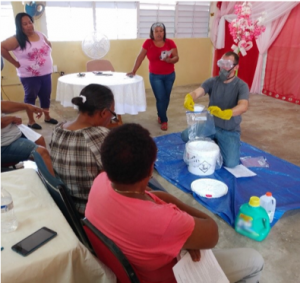
Andrew Robertson instructs community leaders in a train-the-trainer session on packaging donated chlorine disinfectant for individual household disinfection and mold removal in Canóvanas, Puerto Rico.
Caribbean hurricanes Irma and Maria of the 2017 season, now distant memories for many, remain top of mind for Puerto Ricans who are still recovering from those historic storms. During the hurricanes, many homes in Puerto Rico flooded with contaminated water. Worse, many homes had their roofs blown away, so every time it rains, the homes flood again. Water finds its way under roofs and in walls and ceilings, causing a major infestation of mold and other microbes.
Through a donation of 4,000 pounds of chlorine disinfectant from the American Chemistry Council’s Chlorine Chemistry Division and a partnership with the Water Engineers for the Americas (WEFTA), the people of Puerto Rico learned first-hand how chlorine chemistry can help them recover from the Hurricanes.
WEFTA engineer-volunteer Andrew Robertson and his daughter Kati traveled to Puerto Rico. They visited five communities with a combined population of 10,000 people to help residents learn how to disinfect their homes using a granular chlorine product NaDCC. Their strategy was to identify local leaders in each community and train them on how to (a) safely package the disinfectant into smaller portions, and (b) use the disinfectant safely in the home. The leaders were then responsible for distributing the chlorine and teaching their neighbors on how to use the disinfectant in their homes safely.
These trying times in Puerto Rico underscore the importance of organisational partnerships, such as this one, which facilitated recovery from natural disaster with the help of chlorine chemistry.